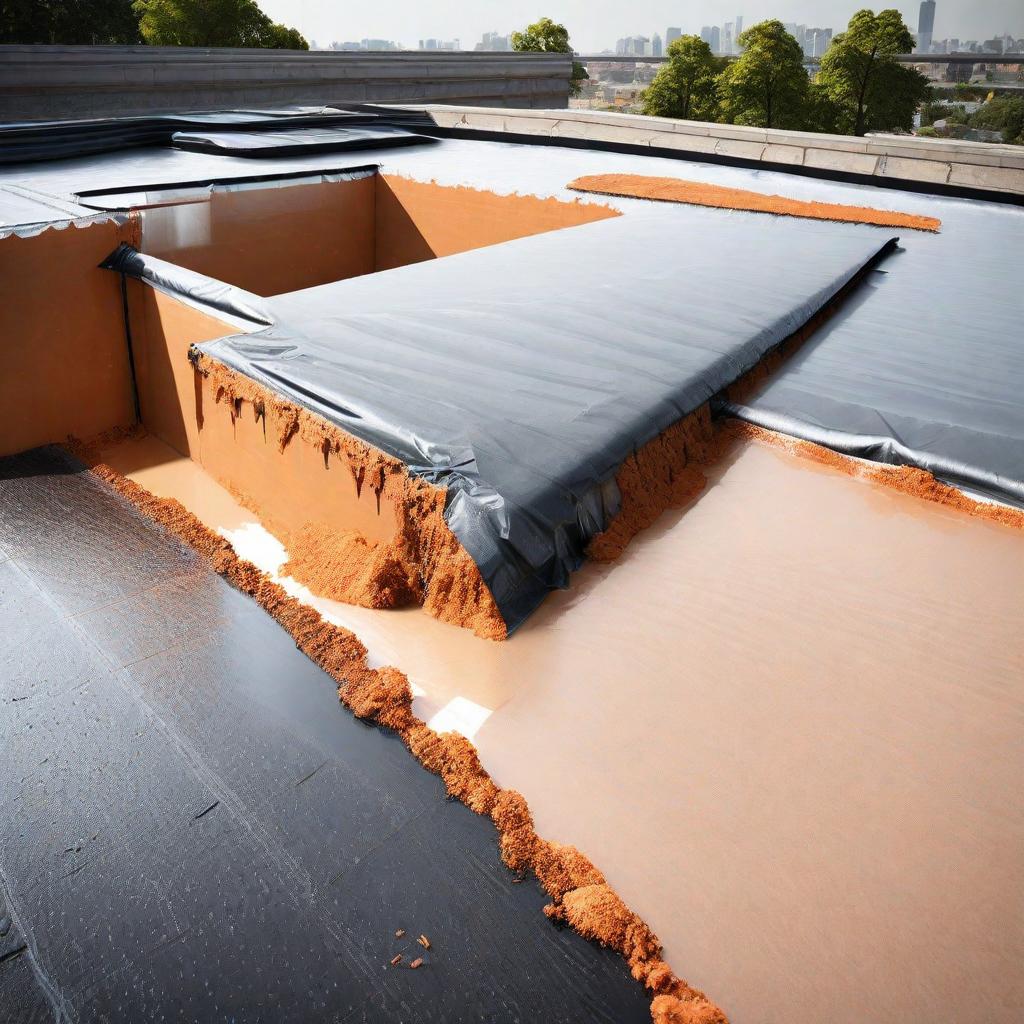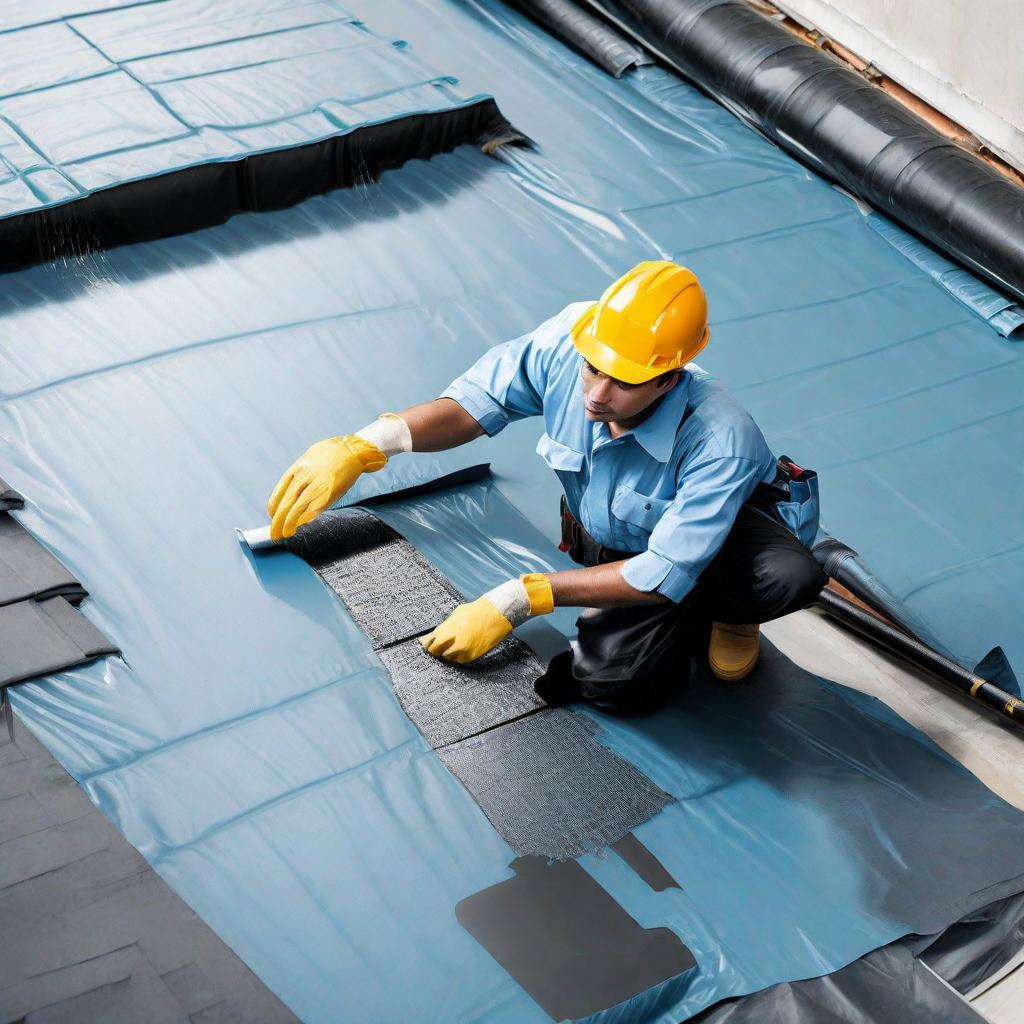

- I. Introduction
- II. The Composition of Tar Sheets
- III. Application Methods
- IV. Advantages of Using Tar Sheets
- V. Common Issues and Solutions
- VI. Case Studies
- VII. DIY vs. Professional Installation
- VIII. Tar Sheet Innovations
- IX. Comparisons with Other Waterproofing Methods
- X. Maintenance and Longevity
- XI. Environmental Impact
- XII. Importance of Professional Consultation
- XIII. DIY Tips for Small-Scale Applications
- XIV. Real-Life Testimonials
- XV. Conclusion
- FAQs
I. Introduction
Tar Sheet for roof : The Ultimate Shield Against Moisture
Water damage is a persistent threat to structures, causing structural deterioration and health hazards. In the battle against moisture, tar sheet waterproofing emerges as a reliable and cost-effective solution. This article delves into the intricacies of tar sheet waterproofing, exploring its composition, application methods, advantages, common issues, and more.
A. Definition of a tar sheet
Tar sheets are robust waterproofing materials designed to create an impermeable barrier against water intrusion. Composed of bitumen and reinforcement materials, tar sheets serve as an effective shield for various structures.
B. Importance of waterproofing
Water damage can wreak havoc on buildings, leading to mold growth, structural decay, and health issues. Waterproofing, especially with tar sheets, is crucial to prevent these issues and ensure the longevity of structures.
C. Overview of tar sheet in waterproofing
Tar sheet waterproofing is a widely used method in construction, offering durability, versatility, and cost-effectiveness. Its application ranges from residential buildings to large industrial structures.
II. The Composition of Tar Sheets
A. Materials used
Tar sheets consist mainly of bitumen, a viscous and waterproof material, reinforced with materials like fiberglass or polyester. This composition results in a sturdy and water-resistant membrane.
B. Manufacturing process
The manufacturing process involves layering the bitumen mixture with reinforcement materials. This layering creates a durable and flexible sheet that can withstand environmental challenges.
C. Durability and longevity
Tar sheets exhibit remarkable durability, providing long-term protection against water infiltration. Their resistance to wear and tear makes them an ideal choice for various construction projects.
III. Application Methods
A. Surface preparation
Proper surface preparation is crucial for the success of tar sheet waterproofing. This includes cleaning, repairing cracks, and ensuring a smooth substrate for effective adhesion.
B. Installation techniques
Tar sheets can be applied using various techniques, including torch application, cold adhesive, or self-adhesive sheets. Each method has its advantages, and the choice depends on the specific project requirements.
C. Suitable surfaces for tar sheet application
Tar sheet waterproofing is suitable for a range of surfaces, including flat roofs, foundations, and basements. Its versatility makes it a go-to solution for diverse construction needs.
IV. Advantages of Using Tar Sheets
A. Cost-effectiveness
Compared to other waterproofing methods, tar sheets are cost-effective. Their affordability makes them an attractive option for budget-conscious construction projects without compromising on quality.
B. Versatility in applications
Tar sheets adapt to various surfaces and structures, providing a versatile waterproofing solution. Whether used in residential homes or industrial complexes, tar sheets offer reliable protection.
C. Resistance to environmental factors
Tar sheets demonstrate resistance to UV rays, extreme temperatures, and chemicals. This resilience ensures that the waterproofing remains effective, even in challenging environmental conditions.
V. Common Issues and Solutions
A. Leakage problems
While tar sheets are highly effective, occasional leakage issues may arise. Proper maintenance, routine inspections, and timely repairs can address these concerns and maintain the integrity of the waterproofing.
B. Maintenance tips
Regular inspections and simple maintenance tasks, such as clearing debris and checking for damage, can significantly extend the life of tar sheet waterproofing.
C. Professional assistance when needed
For complex issues or extensive damage, seeking professional assistance is crucial. Professional waterproofing services can provide expert solutions and ensure the long-term effectiveness of the tar sheet application.
VI. Case Studies
A. Successful tar sheet applications
Exploring real-life case studies highlights the success stories of tar sheet waterproofing. These examples demonstrate the effectiveness of tar sheets in diverse construction scenarios.
B. Real-life examples of waterproofing challenges
Examining challenges faced during waterproofing projects underscores the importance of proper application and the need for tailored solutions. Learning from these experiences enhances the overall effectiveness of tar sheet waterproofing.
VII. DIY vs. Professional Installation
A. Pros and cons of DIY waterproofing
While some may attempt DIY tar sheet installation, it’s essential to weigh the pros and cons. DIY projects may save costs but can lack the expertise needed for thorough and lasting waterproofing.
B. Benefits of hiring professionals
Professional installation ensures the correct application of tar sheets, reducing the risk of errors that could compromise waterproofing effectiveness. The expertise of professionals adds value to the investment in waterproofing.
C. Tips for choosing the right contractor
Selecting a reputable contractor is crucial for the success of any waterproofing project. Consider experience, reviews, and certifications when choosing a professional to install tar sheets.
VIII. Tar Sheet Innovations
A. Latest technologies in waterproofing
Advancements in tar sheet technology continue to enhance waterproofing effectiveness. Exploring the latest innovations provides insights into how these developments can benefit construction projects.
B. Sustainable and eco-friendly options
As environmental consciousness grows, tar sheet manufacturers are developing sustainable and eco-friendly options. These alternatives offer effective waterproofing while minimizing the ecological impact.
C. Future trends in tar sheet development
Anticipating future trends in tar sheet development helps industry professionals stay ahead. From improved materials to enhanced application methods, staying informed contributes to successful waterproofing strategies.
IX. Comparisons with Other Waterproofing Methods
A. Tar sheet vs. liquid waterproofing
Comparing tar sheets with liquid waterproofing solutions highlights the strengths and weaknesses of each method. Understanding these differences aids in selecting the most suitable waterproofing approach.
B. Tar sheet vs. membrane systems
Membrane systems are another popular waterproofing method. Evaluating the distinctions between tar sheets and membrane systems assists in making informed decisions for specific construction projects.
C. Choosing the right solution for specific needs
Every construction project is unique, and selecting the right waterproofing solution depends on specific needs and conditions. Considering the project’s requirements ensures optimal waterproofing performance.
X. Maintenance and Longevity
A. Routine inspections
Regular inspections, at least annually, are crucial for detecting and addressing any issues promptly. These inspections can prevent minor problems from escalating into major waterproofing challenges.
B. Repairing damaged tar sheets
When damage occurs, swift repairs are essential. DIY repairs may suffice for minor issues, but professional assistance is recommended for extensive damage to maintain the effectiveness of the waterproofing.
C. Maximizing the lifespan of waterproofing
Implementing proactive measures, such as proper drainage systems and regular cleaning, contributes to maximizing the lifespan of tar sheet waterproofing. Investing in preventive measures saves costs in the long run.
XI. Environmental Impact
A. Eco-friendly tar sheet options
As environmental awareness grows, manufacturers are producing tar sheets with reduced environmental impact. Exploring eco-friendly options aligns with sustainable construction practices.
B. Sustainable practices in waterproofing
In addition to eco-friendly materials, adopting sustainable practices in the application and maintenance of tar sheets further minimizes the ecological footprint of waterproofing projects.
C. Reducing the carbon footprint in construction
Waterproofing is a vital aspect of construction, and choosing environmentally friendly options contributes to reducing the overall carbon footprint of construction projects.
XII. Importance of Professional Consultation
A. Benefits of expert advice
Consulting with waterproofing experts ensures that the chosen solution aligns with the unique requirements of a project. Expert advice can prevent common pitfalls and optimize waterproofing outcomes.
B. Customized solutions for different structures
Not all structures have the same waterproofing needs. Professionals can tailor solutions to the specific requirements of different buildings, ensuring optimal and lasting protection.
C. Ensuring long-term waterproofing success
Professional consultation adds a layer of assurance to the waterproofing process, ensuring that the chosen tar sheet application is not only effective initially but remains so over the long term.
XIII. DIY Tips for Small-Scale Applications
A. Waterproofing basements and crawlspaces
For small-scale projects, such as basements and crawlspaces, DIY waterproofing is feasible. Tips and techniques for these specific areas empower homeowners to protect their spaces effectively.
B. Protecting outdoor structures
DIY waterproofing extends beyond indoor spaces. Simple measures for protecting outdoor structures, like sheds and decks, contribute to preventing water damage in various areas.
C. Essential tools and safety measures
Equipping oneself with the right tools and following safety guidelines is crucial for successful DIY waterproofing. Understanding the basics enhances the effectiveness of small-scale projects.
XIV. Real-Life Testimonials
A. Experiences with tar sheet waterproofing
Real-life testimonials provide insights into the experiences of individuals who have chosen tar sheet waterproofing. Positive outcomes and success stories underscore the reliability of tar sheets in diverse applications.
B. Positive outcomes and recommendations
Customers who have witnessed positive outcomes from tar sheet waterproofing often share their recommendations. These testimonials serve as valuable endorsements for the effectiveness of tar sheets.
C. Addressing common concerns
Examining common concerns raised by individuals considering tar sheet waterproofing allows for transparent discussions. Addressing these concerns provides clarity and builds confidence in the chosen waterproofing method.
XV. Conclusion
A. Recap of the benefits of tar sheet waterproofing
Tar sheet waterproofing stands out as a reliable, cost-effective, and versatile solution for protecting structures from water damage. Its durability, adaptability, and long-term effectiveness make it a go-to choice in the construction industry.
B. Encouragement for exploring effective waterproofing solutions
The importance of waterproofing cannot be overstated, and tar sheets offer a practical and efficient way to address this need. Encouraging readers to explore effective waterproofing solutions ensures the longevity and stability of their structures.
FAQs
- How long does tar sheet waterproofing typically last? Tar sheet waterproofing can last for several years, with proper installation and regular maintenance. The lifespan can vary based on factors such as climate, usage, and the quality of the tar sheet.
- Is tar sheet waterproofing suitable for all types of roofs? Tar sheet waterproofing is versatile and can be applied to various roof types, including flat roofs and sloped roofs. However, consulting with a professional is recommended to determine the best solution for specific roof structures.
- Can tar sheet waterproofing be applied as a DIY project? While small-scale applications are possible for DIY enthusiasts, larger projects and complex structures are best handled by professionals. DIY projects should follow recommended safety guidelines and use appropriate tools.
- Are there environmentally friendly options for tar sheet waterproofing? Yes, manufacturers are increasingly offering eco-friendly tar sheet options. These alternatives reduce environmental impact while providing effective waterproofing.
- How often should routine inspections be conducted for tar sheet waterproofing? Routine inspections should be conducted at least annually. This helps identify and address any issues promptly, preventing potential water damage and ensuring the longevity of the waterproofing.
This comprehensive guide on tar sheet waterproofing equips readers with the knowledge to make informed decisions about protecting their structures from water damage. Whether considering DIY projects or seeking professional assistance, understanding the benefits and nuances of tar sheet waterproofing is essential.



